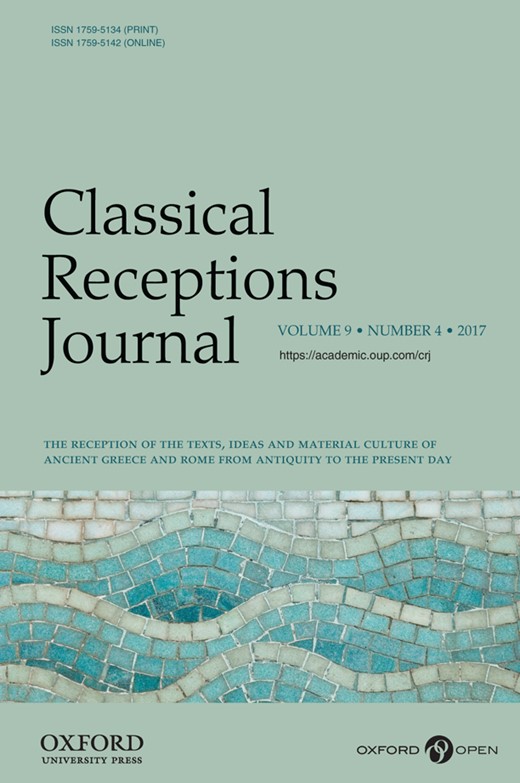-
Views
-
Cite
Cite
Zoë Ghyselinck, Looking back: reception as creative sparagmos. Oskar Kokoschka’s Orpheus und Eurydike revised, Classical Receptions Journal, Volume 9, Issue 4, October 2017, Pages 527–545, https://doi.org/10.1093/crj/clx005
Close - Share Icon Share
Abstract
Early twentieth-century avant-garde theatre has been mainly interpreted within the cultural frames of aesthetic revolution and social transformation. Its experimental scope, however, also draws upon archaic traditions. Exemplary in this regard are parallels drawn between Expressionist theater’s ecstatic and ritualistic performance style and ancient Greek theatre. However, the contribution of Expressionist artists to the reception of antiquity is still in need of further investigation. Therefore, this article addresses the concepts of sight, (in-)visibility, and visual perception in Oskar Kokoschka’s (1886–1980) play Orpheus und Eurydike (1918), with particular regard to (classical) reception as an act of ‘looking back’ and of ‘re-visioning’. I connect Kokoschka’s theatre’s ‘visual scope’ to its dramatic text by appealing to reception studies, since a major theme in the ancient Orpheus myth is the notion of the transgressive gaze and (visual) curiosity. I argue that the Austrian artist, whose thoughts on vision and sight are centralized in Orpheus und Eurydike, thus develops a poetics of artistic self-awareness and —transformation which enables the artist and ‘receiver’ to revise the (or their own) past and to actively construct the future. In this way, I want to demonstrate that Expressionist theatre’s artistic search for renewal hinges on its profound engagement with ‘traditional’, ancient material.



